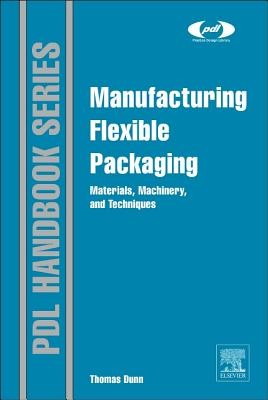
- We will send in 10–14 business days.
- Author: Thomas Dunn
- Publisher: William Andrew
- ISBN-10: 0323264360
- ISBN-13: 9780323264365
- Format: 15.2 x 22.9 x 1.9 cm, kieti viršeliai
- Language: English
- SAVE -10% with code: EXTRA
Reviews
Description
Efficiently and profitably delivering quality flexible packaging to the marketplace requires designing and manufacturing products that are both "fit-to-use" and "fit-to-make". The engineering function in a flexible packaging enterprise must attend to these dual design challenges.
Flexible Packaging discusses the basic processes used to manufacture flexible packaging products, including rotogravure printing, flexographic printing, adhesive lamination, extrusion lamination/coating; and finishing/slitting. These processes are then related to the machines used to practice them, emphasising the basics of machines' control systems, and options to minimize wasted time and materials between production jobs.
Raw materials are also considered, including the three basic forms: Rollstock (paper, foil, plastic films); Resin; and Wets (inks, varnishes, primers). Guidance is provided on both material selection, and on adding value through enhancement or modification of the materials' physical features.
A 'measures' section covers both primary material features - such as tensile, elongation, modulus and elastic and plastic regions - and secondary quality characteristics such as seal and bond strengths, coefficient of friction, oxygen barrier and moisture vapour barrier.
EXTRA 10 % discount with code: EXTRA
The promotion ends in 22d.19:24:49
The discount code is valid when purchasing from 10 €. Discounts do not stack.
- Author: Thomas Dunn
- Publisher: William Andrew
- ISBN-10: 0323264360
- ISBN-13: 9780323264365
- Format: 15.2 x 22.9 x 1.9 cm, kieti viršeliai
- Language: English English
Efficiently and profitably delivering quality flexible packaging to the marketplace requires designing and manufacturing products that are both "fit-to-use" and "fit-to-make". The engineering function in a flexible packaging enterprise must attend to these dual design challenges.
Flexible Packaging discusses the basic processes used to manufacture flexible packaging products, including rotogravure printing, flexographic printing, adhesive lamination, extrusion lamination/coating; and finishing/slitting. These processes are then related to the machines used to practice them, emphasising the basics of machines' control systems, and options to minimize wasted time and materials between production jobs.
Raw materials are also considered, including the three basic forms: Rollstock (paper, foil, plastic films); Resin; and Wets (inks, varnishes, primers). Guidance is provided on both material selection, and on adding value through enhancement or modification of the materials' physical features.
A 'measures' section covers both primary material features - such as tensile, elongation, modulus and elastic and plastic regions - and secondary quality characteristics such as seal and bond strengths, coefficient of friction, oxygen barrier and moisture vapour barrier.


Reviews